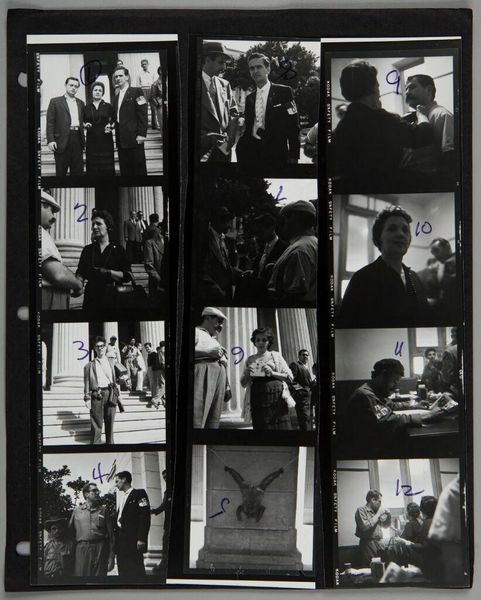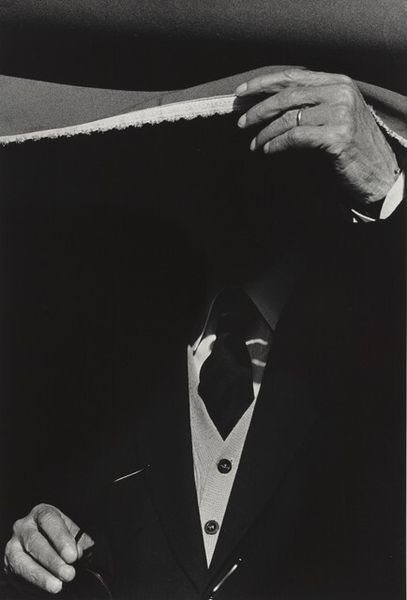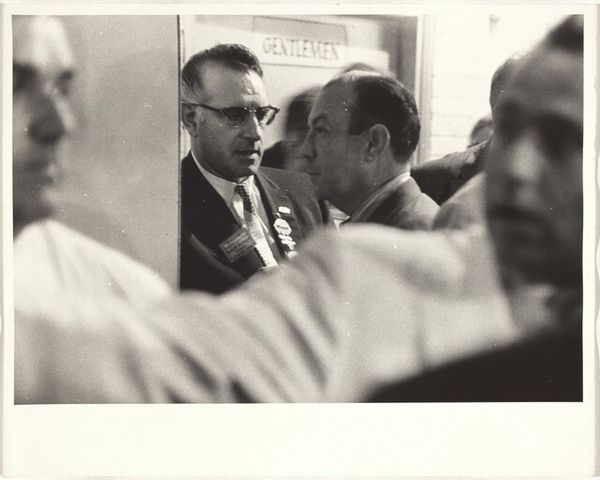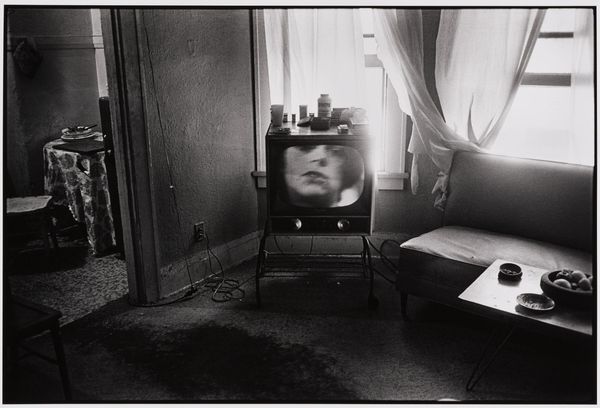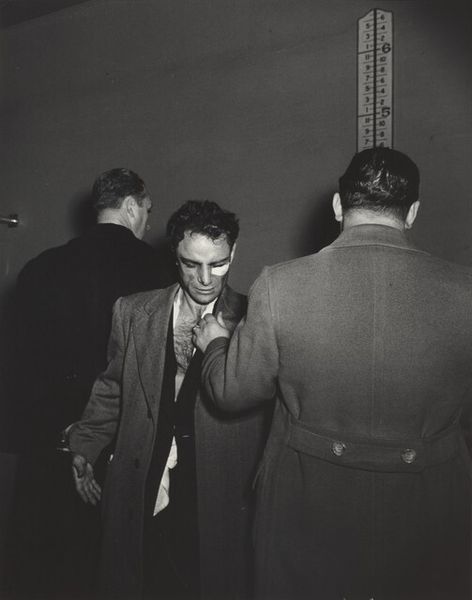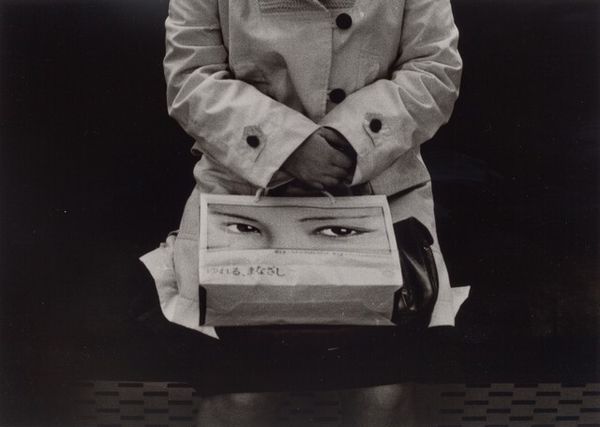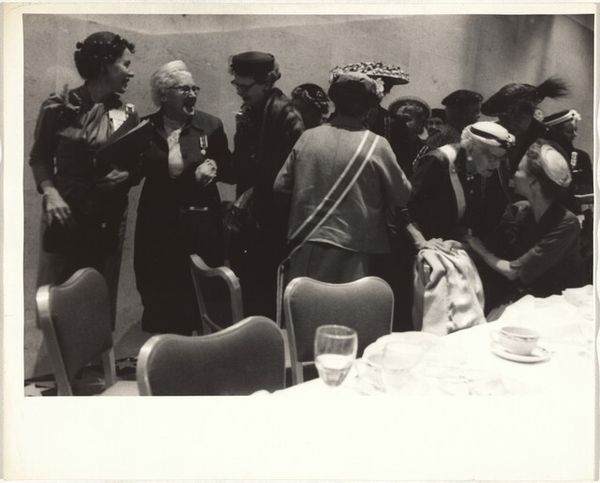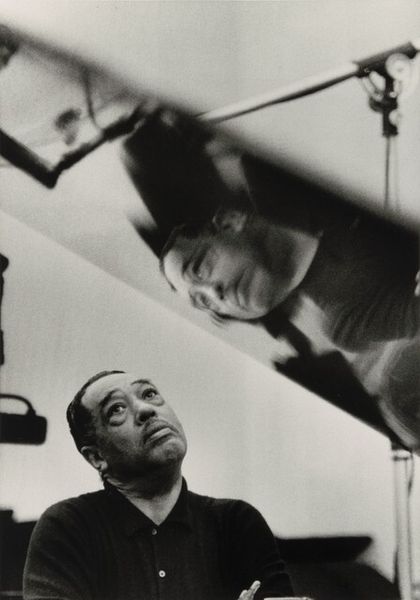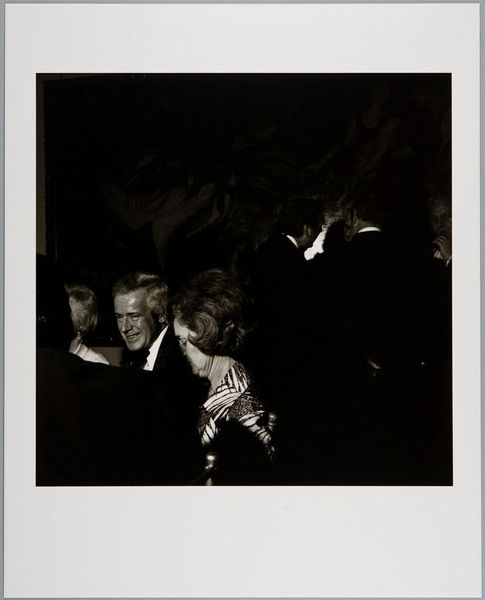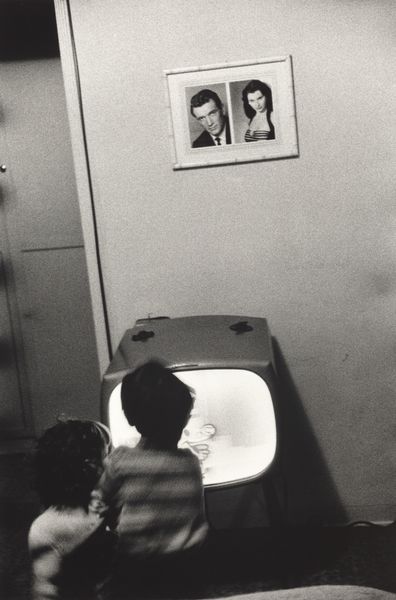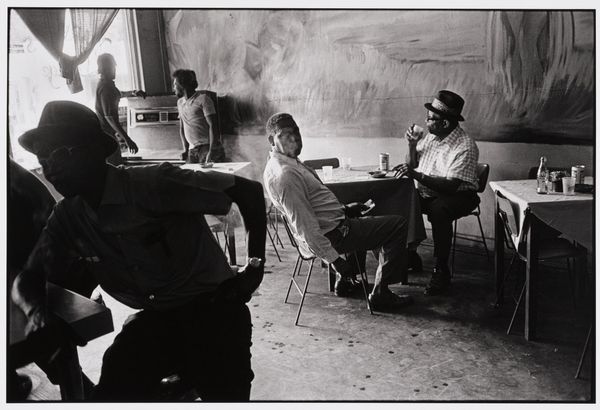
photography, gelatin-silver-print
portrait
black and white photography
photography
historical photography
black and white
gelatin-silver-print
monochrome photography
monochrome
celebrity portrait
monochrome
Dimensions: image: 47.94 × 31.43 cm (18 7/8 × 12 3/8 in.) sheet: 50.17 × 40.32 cm (19 3/4 × 15 7/8 in.)
Copyright: National Gallery of Art: CC0 1.0
Editor: This photograph, "Woody Guthrie at Cooper Union," is a gelatin-silver print by John Cohen, and it was possibly taken anytime between 1960 and 1997. The starkness of the black and white and the unusual composition create a sense of intimacy, almost as if we’re eavesdropping on a private moment. What do you see in this piece, looking at it through the lens of history? Curator: The image intrigues me because of what it suggests about the performance of folk authenticity. Cohen, through his association with the folk revival, participated in constructing ideas of authenticity. Notice how Guthrie isn’t centered, isn’t made to be the focal point in a traditional, heroic way. Instead, his image is partially obscured by other musicians. Editor: So, it's about questioning that heroic representation? Curator: Exactly. By decentering Guthrie, the photograph asks us to reconsider the individual genius narrative so prevalent in art history, and to consider Guthrie as part of a larger cultural and political movement. Do you notice how the photograph acknowledges the context, the social world surrounding the performer, and arguably, making it an integral part of his artistic persona? The setting implies community. Editor: It definitely shifts the focus from just Guthrie to the collective. I hadn't considered that before. Is that why the other figures are so prominent, despite obscuring Guthrie? Curator: Yes. Their presence highlights the collaborative nature of folk music, particularly during the politically charged times. They visually embody his influences, contemporaries and heirs, perhaps even hinting at a continuous legacy beyond the individual. It speaks to how art and music are formed and changed in social environments. Editor: This photograph offers a fascinating counterpoint to more traditional celebrity portraits, emphasizing the political dimensions of artistic expression. I like this revised understanding a lot. Curator: It reveals the crucial role of context in understanding any artwork and cultural figure. Considering such factors encourages us to go beyond simple readings and discover layered stories of collaboration and historical dynamics.
Comments
No comments
Be the first to comment and join the conversation on the ultimate creative platform.
